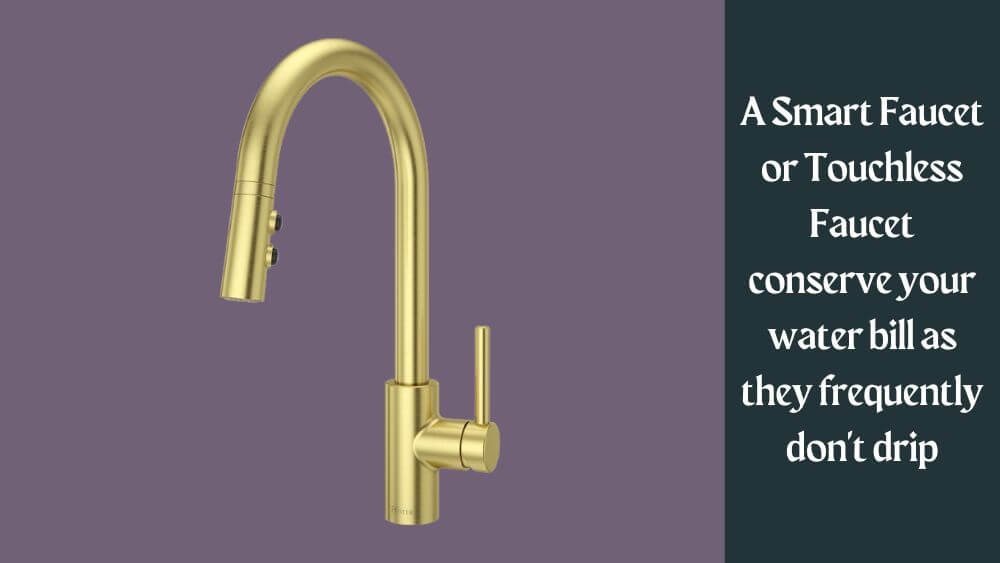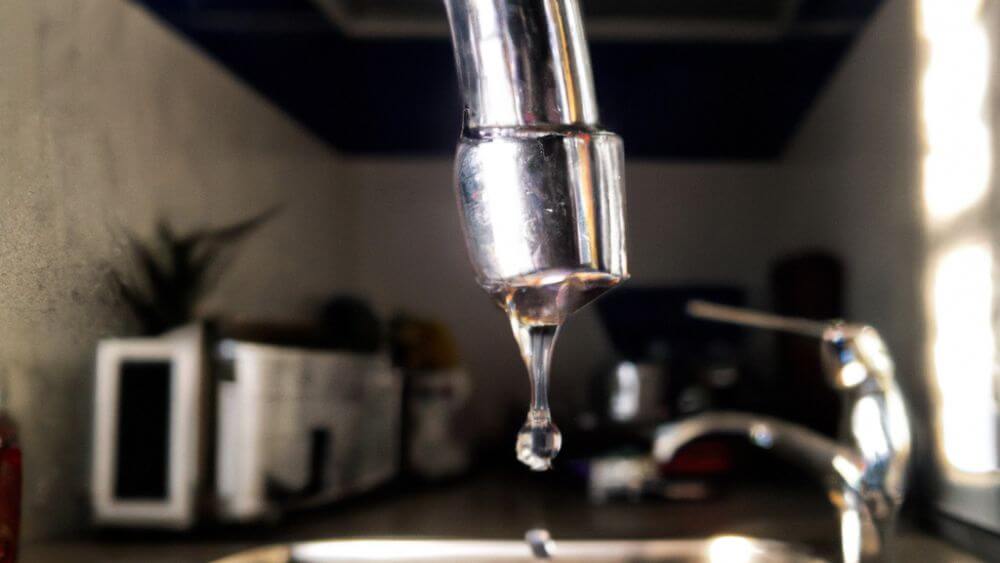It is said that we will have to endure the third world war due to water. We will have to search for safe water everywhere. As Coleridge said, Water, Water everywhere/ nor a drop to drink.” If the scenario remains just as it is now, then we will have a little water for use one day. This article will discuss a common cause of water waste, dripping, or leaky faucet.
You will be surprised to know that a leaky tap or faucet can increase your water bill by up to 10%. You are thinking, how is that possible? An average American household uses 400 gallons of water each day on an average. This means you use at least 2 liters of water each time you turn on your tap. Just think how much this results in yearly loss!
A dripping faucet may seem like a small issue, but it can significantly impact your water bill. In this blog post, we’ll discuss the science of a dripping faucet, the financial impact it can have, and how you can fix it yourself.
What is a Dropping Faucet?
A dripping faucet is a faucet that leaks small amounts of water even when it is turned off. This can happen due to a malfunctioning or worn-out valve or washer, which allows water to seep through the faucet even when it is turned off. The dripping can occur at varying rates, but even a small drip can waste a significant amount of water over time. You must address it promptly to prevent wasting water and avoid unnecessary expenses and potential damage to your pipes.
The Science of a Dripping Faucet
A dripping faucet occurs when a small number of water leaks from the faucet, even when it is turned off. This may seem minor, but it can waste significant water over time. According to the Environmental Protection Agency, a single dripping faucet can waste up to 3,000 gallons of water per year. That’s enough water to take over 180 showers!

The Financial Impact of a Dripping Faucet
Not only does a dripping faucet waste a significant amount of water, but it can also significantly impact your water bill. The cost of the wasted water can add up quickly, especially if you have multiple dripping faucets. Sometimes, a dripping faucet can add as much as 10% to your water bill.
But the financial impact of a dripping faucet doesn’t end there. A dripping faucet can also cause damage to your pipes, which can lead to costly repairs. The cost of repairs due to a dripping faucet can be much higher than the cost of fixing the faucet in the first place.
The good news is that fixing a dripping faucet is relatively inexpensive and easy. You can often do it with just a few simple tools and materials.
Let’s calculate math-
The potential cost of a dripping faucet over time can vary depending on several factors, such as the drip rate and the water cost in your area. However, we can estimate the potential cost of a dripping faucet using some basic calculations.
The matrics –
Faucet Dripping 1drop/Second
4000 Drops = 1 Litre
One gallon = 15,140 drips
3.785 Litres = 1 Gallon
Water bill =$0.03/Gallon
Let’s say, for example, that a faucet is dripping at a rate of one drop per second. This may not seem like a lot, but over a year, it can add up to a significant amount of wasted water. Using the calculation:
- 1 drop/second * 60 seconds/minute * 60 minutes/hour * 24 hours/day * 365 days/year = 31536000 drops per year or 7884 Litres or 2082 Gallons.
Now let’s assume that the cost of water in your area is $0.03 per gallon. Using this information, we can calculate the potential cost of a dripping faucet over the course of a year:
- 2082 Gallons/year * $0.03/gallon = $62.46 year
- 62.46/12= 5.205 Monthly
So, in this example, a dripping faucet that is dripping at a rate of one drop per second can potentially add $$62.46 to your water bill over the course of a year. It is just an example of a single faucet. Imagine if you have 2 or 3 dripping faucets. How much water bill will it consume?
It’s important to note that this is just an estimate, and your actual costs may vary depending on factors such as the drip rate and the water cost in your area. But it’s safe to say that a dripping faucet can be unnecessary, and fixing it can save you money in the long run. Also, this example is based on a single faucet. If you have dripping faucets, the cost can add up quickly.
When a Faucet Drips, What Causes It?
Many reasons cause a faucet to drip. The most common reason is sometimes we need to remember to turn off the faucet accurately. If we use a touchless faucet, we don’t have to bother about the faucet dripping. Because, generally, touchless faucets doest drip.
Worn out washer
A worn-out washer is one of the most common causes of a dripping faucet. The washer is a small rubber ring that creates a seal when the faucet is turned off. Over time, the washer can become worn or damaged, causing water to leak through the faucet.
Corroded valve seat
The valve seat is the part of the faucet where the washer sits. If the valve seat becomes corrupted or damaged, it can cause the washer not to seal properly, resulting in a dripping faucet.
Loose parts
Loose parts within the faucet can also cause a dripping faucet. Water can leak through the faucet if the parts are not tightened properly.
Mineral buildup
Over time, mineral deposits can build up inside the faucet, which can cause the valve not to close properly and cause a dripping faucet.
Malfunctioning faucet
Sometimes, a dripping faucet may be caused by a malfunctioning faucet that needs to be replaced. In these cases, the faucet may no longer be repairable, and a new one needs to be installed.

How to Fix a Dripping Faucet
The first step in fixing a dripping faucet is to identify your type of faucet. There are two main types of faucets, compression, and cartridge. Compression faucets have two handles, one for hot water and one for cold water. Cartridge faucets have a single handle that controls both hot and cold water.
Once you’ve identified the type of faucet you have, you can begin the repair process. Here are some tips to help you fix a dripping faucet:
- Gather the tools and materials you’ll need. It typically includes a wrench, plumber’s tape, and replacement parts (if needed).
- Turn off the water supply to the faucet.
- Remove the handle from the faucet.
- Inspect the parts of the faucet for damage or wear. This may include the O-ring, washer, or cartridge.
- Replace any damaged or worn parts.
- Reassemble the faucet and turn the water supply back on.
- Test the faucet to make sure it is no longer dripping.
It’s important to remember that each faucet is different, so the steps involved in repairing a dripping faucet may vary. If you’re unsure how to fix a dripping faucet, it’s best to consult the manufacturer’s instructions or a professional plumber.
FAQs
Does the warranty cover dripping faucets?
Whether or not a warranty covers a dripping faucet depends on the specific warranty and the manufacturer. Some warranties may cover repairs or replacements for leaks or drips, while others may not.
Make sure you read through your warranty to know what’s covered and what isn’t. If your warranty doesn’t include fixing that leaky faucet, you’ll have to pay for it out of your pocket.
Also, if you are considering purchasing a faucet, look for one with a warranty that covers dripping. It would help you in case you have any issues with the faucet. Some manufacturers offer a lifetime warranty for their faucets, providing added peace of mind and protection against potential issues. Generally, Moen, Delta, Kohler, and Kingston Brass brands cover the warranty of dripping faucets.
To be certain, it’s always a good idea to check with the manufacturer or the retailer where you bought the faucet to confirm the specifics of the warranty and if the dripping faucet is covered.
A single dripping faucet can waste up to 3,000 gallons of water per year, depending on the rate of the drip.
Can a Smart faucet save water bills?
There began the use of some smart faucets in many parts of the world that can automatically turn off while no one is using them and run the tap for an exact purpose.
You can also think of such an option as it will save up to 67% on your water bill, which is a good saving.
How much can a dripping faucet add to my water bill?
The potential cost of a dripping faucet can vary depending on the drip rate and the water cost in your area, but it can add as much as 10% to your water bill.
Is it expensive to fix a dripping faucet?
No, fixing a dripping faucet is inexpensive and can often be done with simple tools and materials. So you do not need to increase your water continuously. Just call a professional plumber.
What should I do if I can’t fix a dripping faucet myself?
If you are unsure how to fix a dripping faucet, it’s best to consult the manufacturer’s instructions or a professional plumber.
What are the signs of a dripping faucet?
The signs of a dripping faucet include:
- A steady or intermittent sound of water droplets.
- A puddle of water underneath the faucet.
- Higher water bills.
Can a dripping faucet lead to mold or mildew growth?
A dripping faucet can lead to mold or mildew growth if the water is not cleaned up properly, as it can create a humid and damp environment.
Can a leaky tub faucet increase water costs?
If you are wondering why your water bill is increasing, it might be the leaky faucet in your kitchen or your bathroom as it is found that a leaky faucet can waste up to 29 gallons of water in a month, and it can increase if the leak is large. The larger the leakage, the higher the water bill.
Can I check for a dripping faucet by reading my water meter?
You can check for a dripping faucet by reading your water meter. Check it at a time when no water is being used. If the dial is moving, then it could indicate a leak.
Can I track my water usage to detect a dripping faucet?
You can track your water usage by monitoring your water bills and comparing them to previous months. A sudden increase in usage could indicate a dripping faucet or another water leak.
Conclusion
A dripping faucet may seem like a small issue, but it can significantly impact your water bill. You can save money and conserve water by understanding the science of a dripping faucet, the financial impact it can have, and how to fix it yourself. Regularly check and fix any dripping faucets in your home to ensure you’re using water and money effectively. You should keep your eyes on your faucets and fix them as soon as you notice a drip to avoid unnecessary expenses. Conserve water and keep your water bill low.

As the chief content writer, Hassan Al Sarker works as a professional kitchen-based content creator at Kitchen Liker.
In addition to reviewing the content published on Kitchen Liker, he ensures that it is accurate, relevant, and helpful. As a result, all the reviews and information published at Kitchen Liker are neutral and userfriendly.
Hassan Al Sarker has a bachelor’s degree in Hotel and Tourism Management From the Newyork University. Before joining Kitchen Liker, he was a contributor at Kitchen Club, United States.

